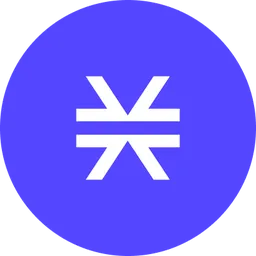The Blockstacks blockchain aims to enable users to control their identity and information, create dApps with protocols and SDK on the network. Profile security is provided with Blockstack Naming Service on the Blockstacks platform, so that users' data is shared and private to the user. It is aimed to be a platform where data in the physical world is processed into blockchain. Many types of digital assets (eg mp3, pdf, docx, flv) or podcasts, domain licenses, software, scoreboards can be stored in them. In addition, users will be able to view all their e-mails, social media profiles, subscriptions and appointments with a single Stacks profile. Stacks (STX) token is the utility token of the platform. It was developed in 2017. The company's headquarters is located in New York. Its founders are Ryan Shea and Muneeb Ali.

The platform states that the US has made its first SEC-approved token offering. In July 2019, a $28 million token sale was accepted by the SEC. This means that the tokens cannot be used for money laundering, with KYC the token holders will be known. They act according to the wishes of the legislators and the government. Blockstacks has also partnered with four independent companies, including Awario, Product Hunt, Internet Labs, and TryMyUI. The Blockstack Signature Fund is also a $25 million funded fund by investors to sell the STX token in compliance with the regulations of the network.
It is the 69th largest cryptocurrency with a market cap of $1.6 billion. With 1,247,857,008 STX in circulation, the total supply is 1,352,464,600 STX, with a maximum supply of 1,818,000,000 STX.
A Javascript developer can develop various applications for Web, iOS and Android on the platform thanks to Stacks' program development kits. Blockstack Public Benefit Corp manages this library, kit and protocols. The number of developers on the platform has reached 10,000 and more than 500 applications have been designed on the platform so far. If you are a React Native or JavaScript developer and want to develop a dApp with Blockstack, you can review the tutorial on their website.
The main programs available on App.co and designed on Stacks are:
Boom: Explore hundreds of apps built on Blockstack.
Pravica: Communication package that strengthens user privacy and security.
Nomie: Free and open source tracker for your mood and life.
Envelop: Easily share your private files without losing ownership.
BlockSurvey: Collect and share form data with guaranteed confidentiality.
Sigle: Beautiful and decentralized open source blog builder.
Cerebro Wallet: A user-owned wallet that supports many currencies for the internet.
dArray: Custom accounting software for your business.
Runcode: Decentralized web hosting for static websites.
Hundreds of different Blockstack applications are also available on Webby, Dappity and Dapp.com.
The Clarity programming language is used to create smart contracts on the Stacks 2.0 blockchain. It is similar to Ethereum's Solidity language. It is deliberately incomplete Turing and is intended to avoid Turing complexity. Developers can calculate what the function of a Clarity program will be and how much STX transaction fees will be required when turned into a smart contract on the Stacks network. The network incentive mechanism rewards developers with a total of $100,000 each month, from best to worst application in the network. The best app takes 20% of the $100,000, while the next app takes 20% of the remaining amount, $16,000. 12.800 dollars remain for the third application. In this way, the reward system continues every month until the 100,000 dollars in the pool is almost zero.
Mining System
Miners on the Blockstacks platform mine with a proof-of-work system to secure the network. In order to mine STX stack blocks, some BTC must be sent to the Stacks protocol. Thanks to the Verifiable Random Function algorithm, a leader is selected for each block and the block rewards are distributed according to the hashrate. STX staking is also possible on the network. You can become a holder by locking STX tokens on the Stacks network, earning BTC in return. The main logic here is that the BTCs sent by the miners to the network with the proof of work system are distributed proportionally to the miners in the form of proof of stake. Using BTC in this way is a new mining system called PoX (Proof of Transfer). It aimed to work on two different blockchains by succeeding in combining PoF and PoS. According to experts, this is a combination of Utility Token and Venture Capital models.